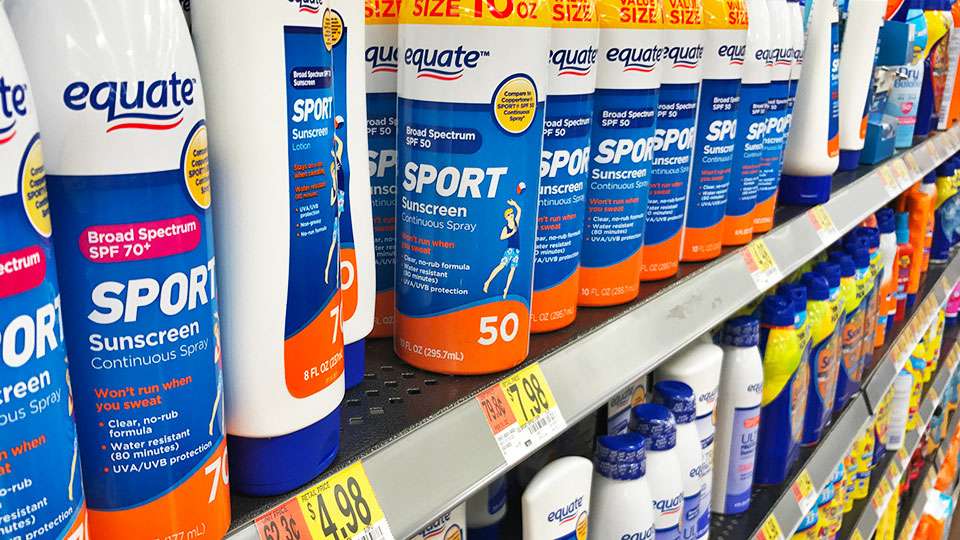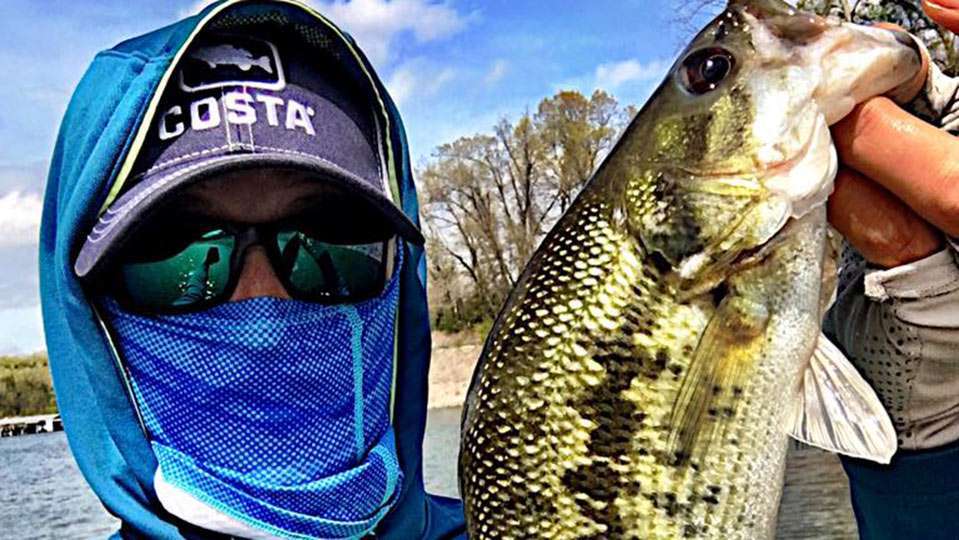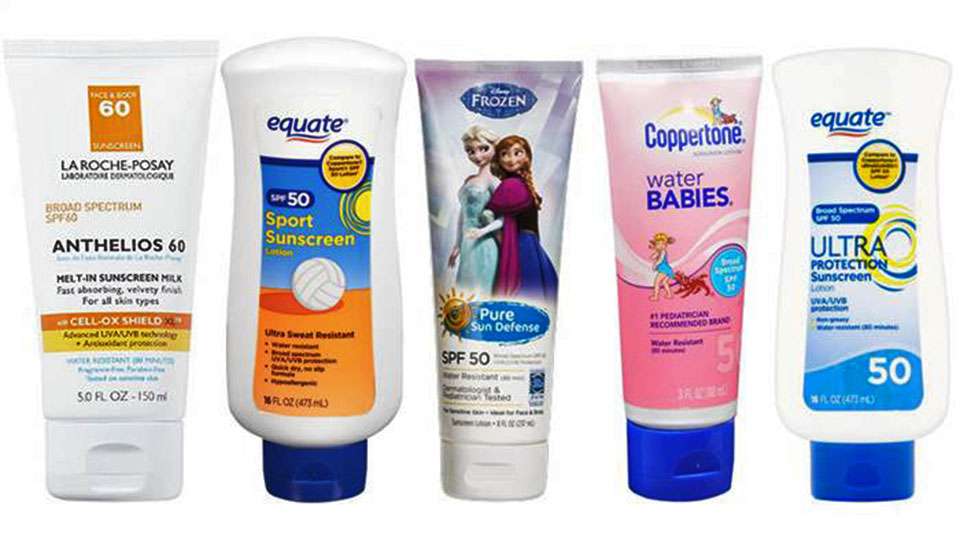
Most every time products are number rated, it brings thoughts of This is Spinal Tap and Nigel Tufnel’s amplifier knobs going to 11.
“It’s one louder, isn’t it?” actor Christopher Guest said playing the dimwitted lead guitarist. When asked why the 10 setting is not simply set to be louder, Tufnel, dumbfounded, pauses before giving his oblivious answer, “These go to 11.”
Nigel’s take is similar to that of some sunscreen producers, which might make claims their product is better because its SPF “goes to 111.” But those high numbers don’t always live up to their expectations, said Sonya Lunder, lead author of EWG’s 2017 Guide to Sunscreens.
“The vast majority of sunscreens available to Americans aren’t as good as they should be,” she said. “Sunscreens will not improve until the Food and Drug Administration sets stronger rules, reviews harmful chemicals and allows the use of new ingredients that offer stronger UVA protection.”
With summer here and plenty of sunny fishing days ahead, Lunder was asked what are the best practices anglers should be taking to protect themselves from the sun.
HIGHER NUMBER NOT NECESSARILY BETTER
Many people think the higher the number, the better the protection. SPF (sun protection factor) numbers labeled on sunscreens is just a relative measure of how long a product will protect the user from ultraviolet (UV) B rays. Those are the ones that damage the skin’s outer layer and cause sunburn. The epidermis is where the most common form of skin cancers occur, and they are linked to an accumulation of exposure through the years.
Everyone’s skin is different, but let’s say with no protection your skin begins to burn after 15 minutes. A sunscreen of 30 SPF is supposed to give you 30 times the protection of none, or 450 minutes. Lunder said consumers thinking they’d be protected anywhere close to that long is ludicrous, because products break down or wear off at different intervals.
“Most all products, you need to put on every two hours,” she said.
Skincancer.org said that an SPF 15 product will “screen 93 percent of the sun’s UVB rays, while SPF 30 protects against 97 percent; and SPF 50, 98 percent.” Consumer Reports has tested sunscreens and found many do not give the advertised protection, and, no matter how high the SPF, some rays get through.
“High SPF is a marketing gimmick,” scientist David Andrews said in the EWG report. “SPF values over 50 mislead people into thinking they are completely protected from sunburn and long-term skin damage. But instead, they may encourage people to spend more time in the sun, exposing themselves to more, not less, ultraviolet rays.”
The other rays to be considered are UVA, which are more harmful because they can reach the dermal layer and damage collagen and elastic tissue. They are the cause of melanomas and other dangerous types of skin cancer, which are believed to be brought on by blistering sunburns.
The skin layer affected by UVA rays is also where the cells that darken skin are found. (It’s why UVA rays are used in tanning beds.) Tan skin may be thought to look healthy, but it is really DNA damaged – an attempt by the skin to prevent further injury, which can lead to cell mutation and cancer.
For sunscreens to be effective, they need to provide both UVB and UVA protection, which is sometimes labeled multi-spectrum or broad spectrum.

CLOTHING HELPS MINIMIZE EXPOSURE
Sunscreen is just one strategy. Covering up, seeking shade and staying out of peak sun hours from 10 a.m. to 4 p.m. are also recommended, but anglers can’t really do all that.
Lunder said the tactical clothing most anglers wear is a great start. Many of the high-tech fishing shirts and jerseys that anglers wear provide UPF (ultraviolet protection factor) of 50 or so. Anglers also fight exposure by sporting sun-protective gloves and buffs. Hats are critical, and pros like Rick Clunn and Randy Howell are covered better in their larger bucket hats with wide brims all the way around.
“Covering up is the best way to protect yourself, and remember that sun reflects off the water, so it comes up under the hat,” she said, noting the U.S. has experienced higher incidences of sunburns, UV exposures and skin-related cancers in the past two decades. “You also really do need a good sunscreen and must remember to reapply every two hours.”
Getting the right sunscreen is just as important. The EWG study found that about 73 percent of products rate poorly for skin protection or have worrisome ingredients. Europe has stricter standards and better sunscreens, but the FDA has yet to approve them.
In general, sunscreens should be applied 15-30 minutes before going outside, and that you should use at least a teaspoon for each body part. Many people don’t apply enough to do the job.
“Sunscreen products aren’t really communicating their limitations,” Lunder said. “The big numbers are really misleading, and the brands really vary. There are some good products.
“For fishing, you would want SPF from 30 to 50, the broad spectrum … and you need to remember to re-cover every two hours.” (She harped on that several times, so it must be important.)
TOP PRODUCTS NOT ALWAYS TOP DOLLAR
Consumer Reports released its annual list of top sunscreen products in May, and of the 58 products they tested, 20 were proven to provide less than half the SPF protection than the number advertised on their labels.
The nonprofit organization, which provides unbiased product testing, did offer a list of its top-rated sunscreens.
Although La Roche-Posay’s Anthesios 60 Melt-In Sunscreen Milk rated well, its $36 price for 5 ounces puts it off my shopping list. Walmart’s Equate Sport Lotion SPF 50 was right alongside the fancy stuff but cost only $5.
Some others that rated well were Pure’s Sun Defense Disney Frozen Lotion SPF 50 for about $6, Coppertone’s WaterBabies Lotion SPF 50 for $12 and Equate Ultra Protection Lotion SPF 50 for $8.
If you can’t find any of those, Consumer Reports said get one with an SPF of at least 50, and it should contain ingredients like avobenzone rather than “natural” ingredients.
And as we’d have to teach Tufnel, remember that higher numbers don’t mean louder, er, better protection.






